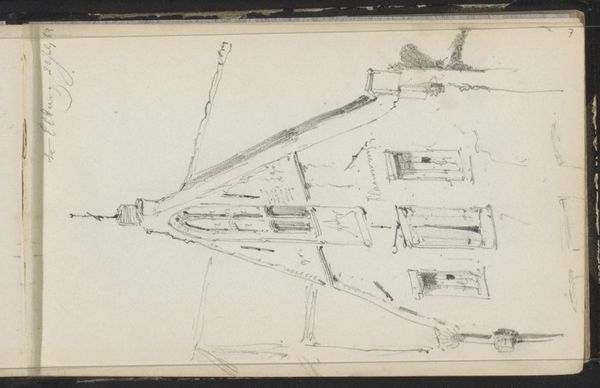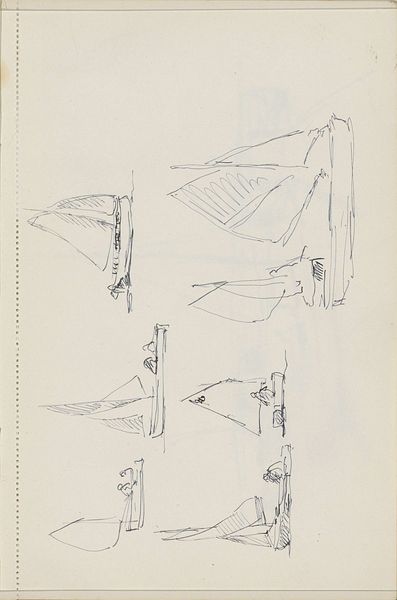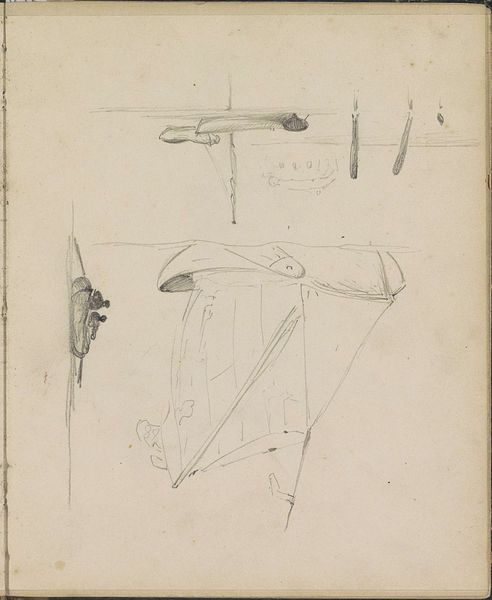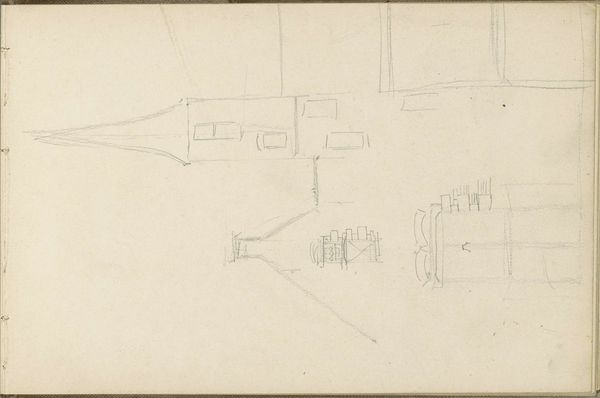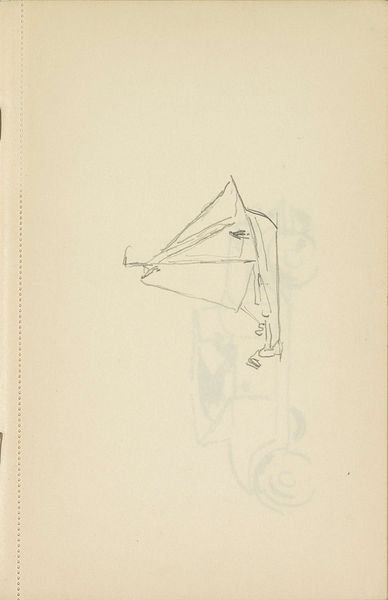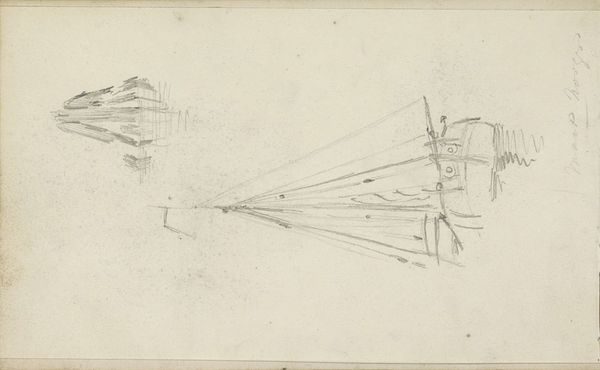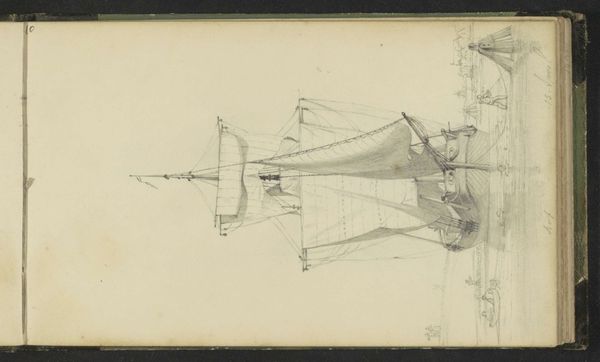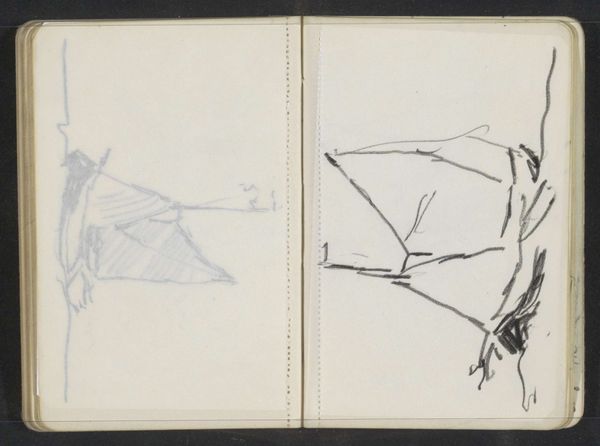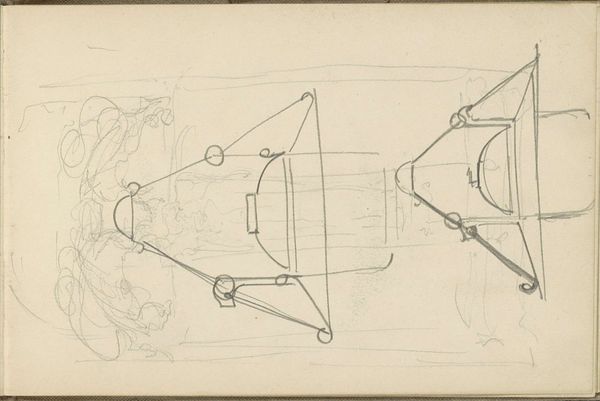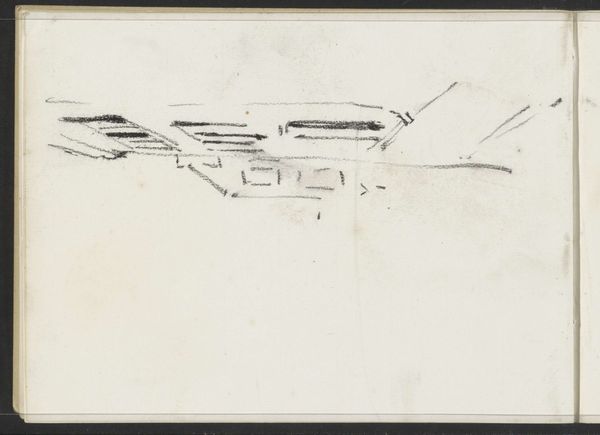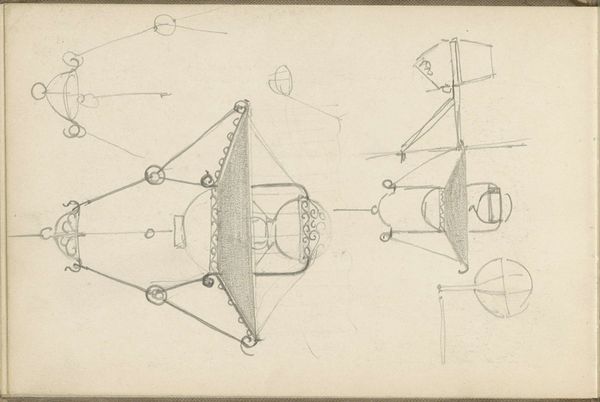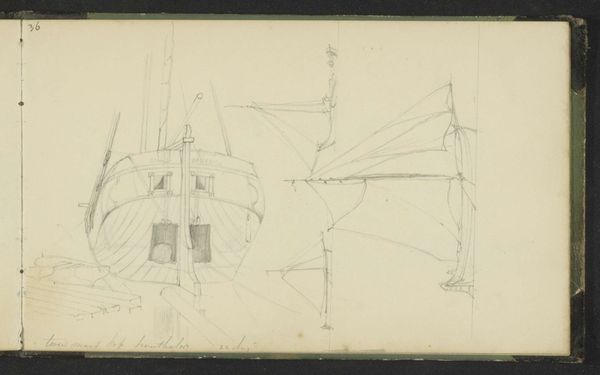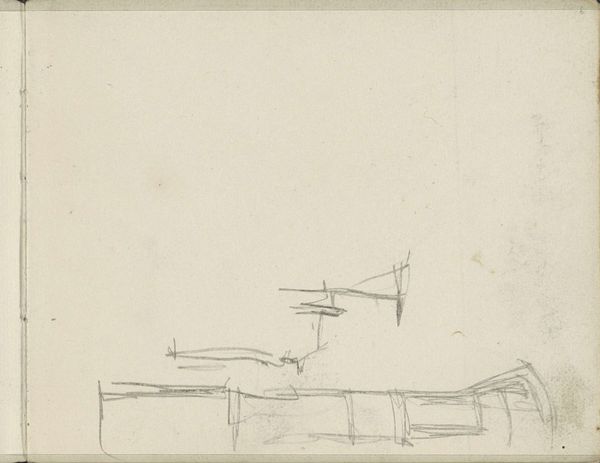
drawing, paper, pencil
#
drawing
#
amateur sketch
#
toned paper
#
light pencil work
#
pencil sketch
#
sketch book
#
landscape
#
paper
#
personal sketchbook
#
ink drawing experimentation
#
sketch
#
pen-ink sketch
#
pencil
#
sketchbook drawing
#
sketchbook art
Dimensions: height 95 mm, width 154 mm
Copyright: Rijks Museum: Open Domain
Curator: Here we have "Kerk," a pencil drawing from 1892 by Willem Cornelis Rip. What strikes you first about this seemingly simple sketch? Editor: Its austerity. The minimalist lines and muted tones create a sense of quiet desolation. There's a starkness to the architectural rendering, and I’m wondering about the societal context surrounding places of worship at the time. Curator: Let’s look closer at the composition. Rip’s rendering of the church, with its sharp angles and simplistic geometric forms, seems almost like an exercise in perspective and tonal value, wouldn't you agree? Note the precision in capturing light and shadow to define form, creating a surprisingly weighty presence with only a few pencil strokes. Editor: Precisely, and that sharp geometry feels significant. It perhaps signals the rigid structures of religious institutions themselves and, simultaneously, emphasizes their intended purpose as places offering clarity during social turmoil, perhaps of the artist himself. Is he seeking refuge in structure amid societal uncertainty? Curator: It’s fascinating to consider this drawing as an intimate glimpse into Rip’s personal practice, found within his personal sketchbook. I find compelling how such delicate pencil lines carry so much architectural weight. The restraint in detail emphasizes the core essence of the church’s structure, a compelling play with fundamental form. Editor: Yes, I agree, but perhaps we can consider what this church represented in its local context, how its congregation functioned, and what role this particular denomination may have had during this time. These sketches of local scenes humanize our understanding of place, grounding it in socio-political history. What narrative are those sharp angles building for the faithful outside of simply visual play? Curator: Thinking about the overall visual impression, the formal relationships in the lines and shading are actually quite successful here, suggesting the potential underlying spiritual order Rip may have located amidst chaos through careful analysis and study. Editor: Ultimately, an image like "Kerk" encourages a broader understanding. Through Rip's eyes, a study in geometry might illuminate a powerful anchor—structurally, spiritually, and politically—within a changing landscape, inviting conversations about the intertwined influences of belief and belonging.
Comments
No comments
Be the first to comment and join the conversation on the ultimate creative platform.
